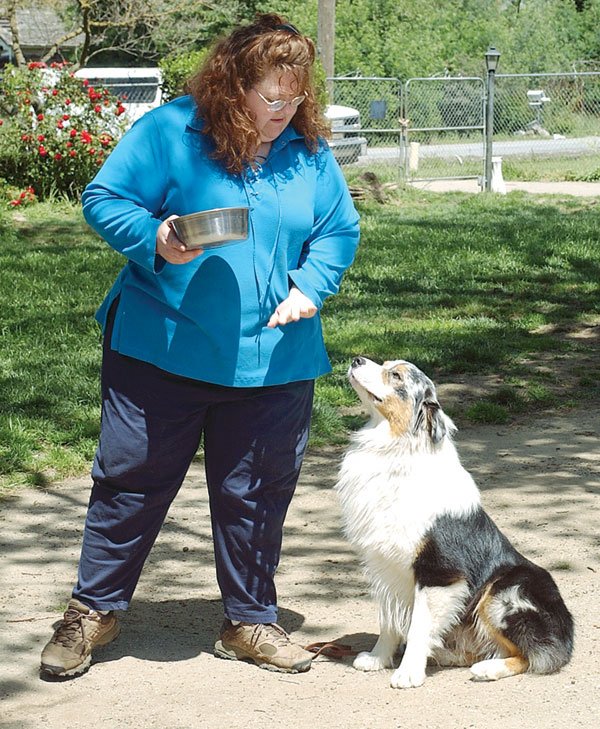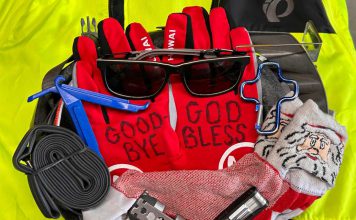A dog’s life is no democracy, and to whip your pooch’s behavior
into tip-top shape, you’ll have to become a doggie drill
sergeant
Chucky was a maniac. He jumped all over guests, ran wild through the house and chewed the carpet, but these days he’s much better behaved – so much better that he’s now quite literally a model pooch, signed by studio animal provider Bow Wow Productions.
He jumps, sits and performs tricks, like ringing a bell with his nose or picking a triangular shape from a field of circles, on command. His shift to princely behavior wasn’t a miracle, according to owner Dana Parisi, just practice.
Parisi enrolled the silver-gray poodle-maltese-daschund-chiahuahua mix in obedience classes as soon as she began to notice behavioral problems when Chucky was around 10 weeks old, but she was surprised when her seemingly bright dog didn’t do well during the first few weeks of training.
“At first he didn’t get it, and I started saying, “Oh, no! I’ve got a dummy dog!'” said Parisi. Fortunately, about five weeks into his classes, the training clicked. Chucky was soon potty trained, able to walk on a leash without pulling and ready to please.
Breaking bad habits is hard do, especially for dogs, but problem pups can learn to behave if their owners are willing to abide by the rules of pack life.
Breaking a dog’s bad habits usually requires an owner to break his or hers, but the results should pay off for both of you in the end with dividends paid in increased communication and better behavior, according to Heather Pozzi of Heatherly Kennels in Morgan Hill.
Dogs aren’t born with an understanding of human society, and without clearly defined rules, they’re more than likely to come up with their own definitions of appropriate behavior, said Pozzi. Rule number one, she said, is to become a leader.
“Dogs don’t see life as a democracy,” said Pozzi. “They need a hierarchy with consequences, so you must be a leader to have a dog be relaxed and comfortable. If you don’t do that, the dogs will be stressed and reactive all the time.”
Pozzi suggests taking control by establishing a routine and a regimen for your dog.
In the case of a dog who lunges for the food bowl before the owner has had the opportunity to set it down or clear his or her hand away, that means consulting a veterinarian to find out how much and how often you should be feeding the dog, then setting up a schedule.
Pour the food in the dog’s bowl, but feed the dog the prescribed amount only after it has performed a required task, such as sitting and staying or fully sitting twice, she said.
Then, give the dog a window of consumption of no more than 20 minutes, removing the bowl after the meal time is over.
Occasional hand feeding can be helpful as well, according to Pozzi, reinforcing the dog’s desire to listen to you by forcing it to work for the meal. In this instance, she suggests keeping the kibble bowl on the counter and rewarding the dog with small amounts of food each time it completes a given task or performs a requested trick.
Consistency is a key to this form of training, so owners will have to make sure that they follow through with it each evening, Pozzi said, and the same goes for other common dog problems.
Issues like aggression can be seen in most dogs as early as age seven weeks, and some of these behaviors are hereditary, but the earlier training begins, the better off both dog and owner will be, according to Susan Westover, a Gilroy-based dog trainer who participates in competitive obedience classes and owns Westover Dog Training.
Behaviors like biting, which are often viewed as cute in a puppy, can be downright dangerous for people and dogs if they remain uncorrected into a dog’s adult years, Westover added.
“Time is of the essence when you get (an aggressive) dog,” said Westover. “You need to break its habits so they don’t become ingrained. Old habits are much harder to break, just like quitting smoking or being fearful of flying. The dog may not act on them, but it will always have those tendencies. They’re always going to have that impulse, but they’ll just be trained out of acting on it.”
Other issues aren’t so much the result of poor training or bad behavior as they are cries for attention and signals of boredom, according to Becky Butler, owner of Train-Rite Dog Obedience in Hollister.
“Most behavioral problems start to develop between four and six months of age,” said Butler. “That’s about the time that dogs really start to go from cute little puppies to adult dogs, and that’s when people begin to ignore their puppies a lot of times. They don’t get enough attention, don’t get enough activity, and they’re bored.
“Boredom is probably one of the biggest reasons for bad behavior I can think of. When they’re just left in a back yard, of course they’re going to dig holes, of course they’re going to gnaw on things. What else have they got to do?”
A family’s lifestyle and a breed’s demeanor should factor into dog-buying decisions, but if it’s already too late, the least a busy family can do is give the dog ample distraction during the day.
Butler suggests buying two varied sets of toys and rotating them every three to four days so that the dog will constantly have something “new” to play with. She also suggests taking time to acknowledge the dog’s presence.
“Most of the time, if a dog is jumping up, it’s just out of happiness,” said Butler. “When you get home, the dog is totally excited, but you’re tired, and you just want to sit down, so a lot of times you just walk by and ignore him. A lot of that behavior would be curbed if you just go down to the dog’s level and say ‘hi’ to him for a minute or 30 seconds and acknowledge him.”
The process may require more firm commands if the dog is already in a strong pattern of jumping, but one of the best ways to get a positive response from any dog, the trainers agree, is to catch them doing something good.
If the dog has been quiet or is chewing on the correct toy, tell it what a good dog it is and reward it with a treat, said Pozzi. Teach dogs a phrase that they will begin to equate with positive reinforcements like petting and treats by saying “Yes!” when they act well, she added.
If a dog’s behavior problems are moderate, the help of a good dog trainer can whip it into shape with these and other positive reinforcement-oriented commands, but a deeper issue, like chewing brought on by extreme separation anxiety rather than boredom or aggression created through abuse or abandonment, may take years to erase and could require the help of a more highly skilled professional like a behavioral specialist, said Pozzi.
But for most dogs, a little love and support mixed with consistency and resolve are the best ways to make them straighten out and fly right.
For more information on training your dog, contact any of the trainers listed in this story. Pozzi can be reached at (408) 683-2163, and her classes, covering agility, tricks and basic obedience for puppies and adult dogs, convene in June. Butler, available at (831) 801-9496, has group obedience classes beginning May 16 and Westover, available at (408) 842-3584, accepts private clients and teaches through the Gilroy Kennel Club.














